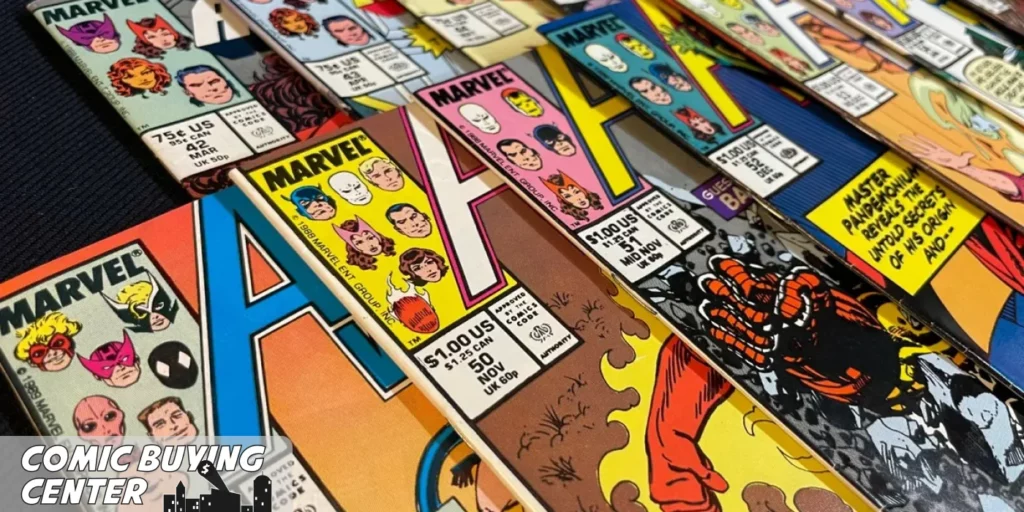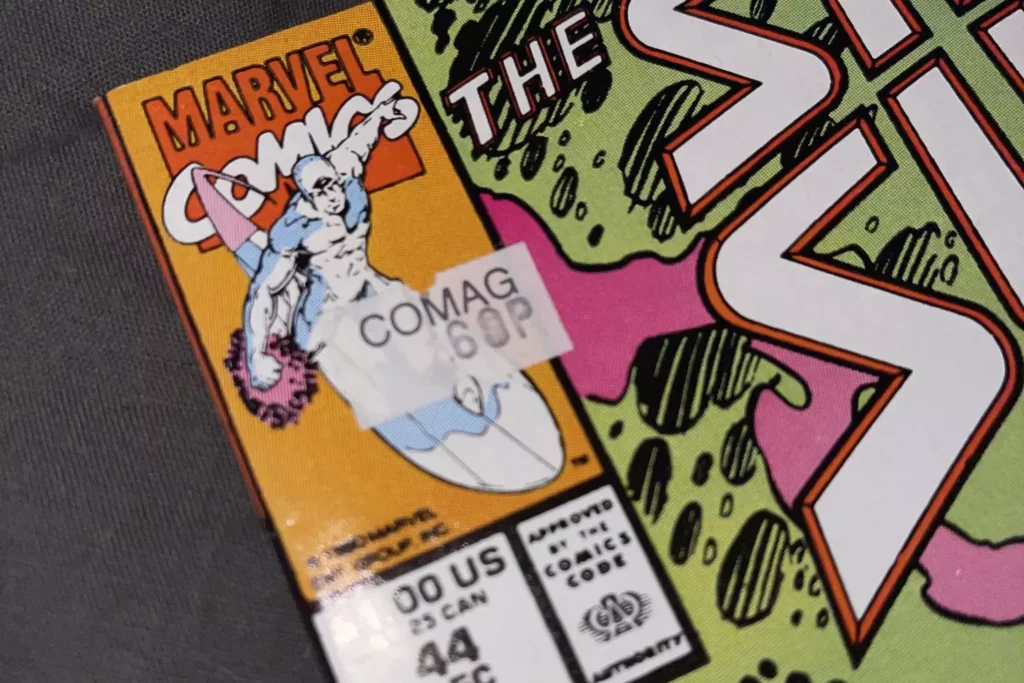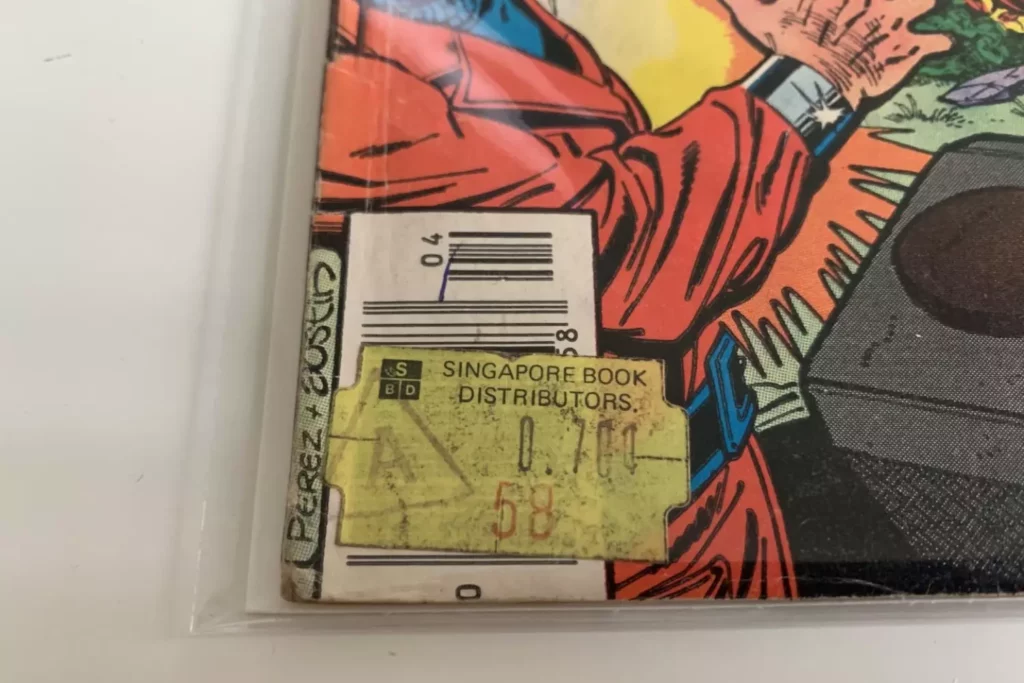When preparing to sell your comic books, one common question is whether to remove comic book stickers from the cover or not. This decision can impact the comic’s value and appeal to potential buyers. Before making anything, for those willing to sell comic books, it’s very important to understand how stickers might affect the condition and value of your comic book. Most people just try to remove them, which may be a good idea sometimes, but it may also downgrade the value of the issue significantly. So understanding what it is and when it is a good idea to remove a sticker is essential for collectors and enthusiasts alike.
Is it Possible to Remove a Sticker from a Comic?
It is possible to remove a sticker from a comic book, but it depends on a few things. If the sticker is newer and hasn’t been on the cover for long, it might come off cleanly, especially if it’s a removable type. Using gentle heat from a hairdryer can help loosen the adhesive. However, older stickers or those with strong adhesive can damage the cover when removed, leaving tears or residue. In such cases, it’s challenging to remove sticker residue from book without causing harm. It’s best to consult a professional if you’re unsure about the potential for damage.
Should You Try to Remove a Sticker Yourself?
The answer is unclear. First, ask yourself if leaving the sticker in place will affect the comic’s value. If removing the sticker might damage the comic, consider how much value it could lose. Do you have the skills to remove it safely without harming your beloved issue? Most professionals strongly advise against removing stickers from valuable issues yourself. If the comic isn’t valuable or you don’t mind potential damage, you can proceed as you see fit.
You can try to remove stickers from books yourself if the sticker is new and has a removable adhesive. Use some gentle heat from a hairdryer to make the process easier and smoother, without damaging the comic book itself. However, if the sticker is old, stubborn, or you are unsure about the adhesive type, it’s best to seek professional help. Professionals can safely remove stickers without damaging the cover or leaving residue, preserving the book’s condition. If there’s any doubt about causing damage, it’s safer to consult an expert. Especially if the comic book has a significant value, be it monetary or sentimental value.
Can Stickers be Removed Professionally?
Professionals use specialized tools and techniques to safely remove stickers without damaging the book. They may use solvents to dissolve the adhesive and heat to loosen the sticker, ensuring the cover remains intact. Additionally, they can remove any residual adhesive, restoring the book’s original appearance. This is especially useful for older or valuable books where improper removal could cause significant damage. If you’re concerned about preserving your book’s condition, seeking professional help for removing stickers from books is the best option.
Stickers may also be removed as part of a cleaning or grading process, if requested. Professional grading companies like CGC can handle this. Additionally, these companies have experienced workers who can evaluate the comic book and decide whether removing the sticker is necessary or if it will negatively affect the value.
Can a Sticker Ever Add Value to a Comic?
Actually yes! A sticker can add value to a comic in several cases:
- Official and Intentional Part. If the sticker is an official and intentional part of the comic, such as promotional stickers or price tags from the original release, it can increase the comic’s uniqueness and desirability.
- Part of an Original Issue. When the sticker is part of an original issue, indicating a special edition or a variant, it can improve the comic’s value, especially if it’s rare or limited.
- Pedigree Collection. Comics that are part of a pedigree collection, known for their high quality, may have stickers that mark their authenticity and origin, adding to their value.
- Historical Value. For collectors who value the history and context of comics, stickers that reflect the comic’s journey and background can be significant, making the comic more appealing as a collectible item.
So removing it or not is a tricky question. You better ask for professional help if you have any doubts.
How To Remove Stickers From Books Safely?
Removing stickers from books can be tricky, but here are some safe methods to consider:
- Option 1 – Use Un-Du. This product is specifically designed for removing stickers from various surfaces. Un-Du works by getting under the sticker and dissolving the adhesive, allowing for safe removal without leaving marks. It is highly effective and user-friendly.
- Option 2 – Other Solvents. You can use other solvents beside Un-Du, but be cautious. Avoid using WD-40 as it leaves marks and residue. Goo-Gone is even worse, often leaving more noticeable stains. If you choose another solvent, test it on some journals you don’t care about first to ensure it won’t damage the book.
- Option 3 – Humidity and Heat. Exposing the sticker to humidity and then using gentle heat can help loosen the adhesive. This method is tricky and can potentially damage the book if not done correctly. Ensure you apply minimal heat and monitor the process closely.
All in all, the best way to get stickers off books is by seeking professional help. Professionals have the tools and experience to safely remove stickers without risking damage to your book. Their experience will also help you understand whether removing the sticker is necessary at all.




